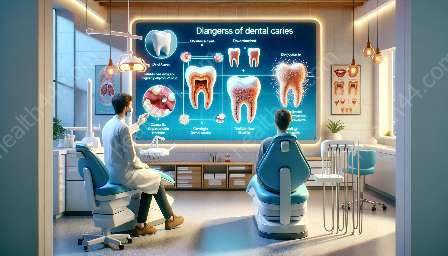Oral cancer has become a significant public health concern globally, and its epidemiology and incidence rates are influenced by various factors, including poor oral health. Understanding the trends in oral cancer epidemiology can provide valuable insights into the impact of lifestyle, environmental factors, and healthcare interventions on the incidence and prevalence of this disease.
Overview of Oral Cancer
Oral cancer refers to cancer that develops in the tissues of the oral cavity, including the lips, tongue, gums, floor of the mouth, and the roof of the mouth. It can also occur in the oropharynx, which includes the back third of the tongue, tonsils, soft palate, and throat. The most common type of oral cancer is squamous cell carcinoma, which originates in the thin, flat cells lining the oral cavity.
Epidemiology of Oral Cancer
The epidemiology of oral cancer encompasses the patterns, causes, and effects of this disease within specific populations. Over the past few decades, oral cancer has demonstrated notable variations in its incidence, prevalence, and mortality rates across different geographical regions, age groups, and demographic profiles.
Global Incidence Rates
The global incidence of oral cancer has exhibited an upward trend in recent years, with an estimated 300,000 new cases diagnosed annually. The burden of oral cancer is particularly high in South and Southeast Asia, parts of Africa, Eastern Europe, and Melanesia. Furthermore, certain subpopulations, such as betel quid and tobacco users in these regions, face a disproportionately higher risk of developing oral cancer.
Regional Disparities
Regional disparities in oral cancer epidemiology are influenced by factors such as tobacco and alcohol consumption, human papillomavirus (HPV) infection, dietary habits, and socioeconomic determinants of health. For instance, countries with a high prevalence of smoking and alcohol use tend to have elevated rates of oral cancer, while HPV-related oropharyngeal cancer is more prevalent in developed nations.
Age and Gender Trends
Age and gender are significant determinants of oral cancer incidence, with the disease being more common in men than in women. The risk of developing oral cancer increases with age, particularly beyond the age of 45, and older individuals are more likely to experience advanced stages of the disease at the time of diagnosis.
Impact of Poor Oral Health
Poor oral health has been identified as a contributing factor to the development and progression of oral cancer. Chronic conditions such as periodontal disease, poor oral hygiene, and dental caries have been associated with an increased risk of oral cancer, highlighting the intricate relationship between oral health status and the incidence of this malignancy. Additionally, the presence of pre-cancerous lesions and non-healing ulcers in the oral cavity may signal an underlying oral cancer pathology, emphasizing the importance of regular dental examinations and early detection.
Shared Risk Factors with Poor Oral Health
The effects of poor oral health on oral cancer risk are often intertwined with common risk factors, including tobacco use, alcohol consumption, and dietary deficiencies. Individuals with suboptimal oral hygiene practices may be more susceptible to the detrimental effects of these risk factors, further exacerbating their predisposition to oral cancer development.
Lifestyle and Environmental Factors
Various lifestyle and environmental factors contribute to the interplay between poor oral health and oral cancer. Environmental carcinogens, such as exposure to betel quid, areca nut, and industrial pollutants, can significantly augment the risk of oral cancer in individuals with compromised oral health. Moreover, dietary factors, including the consumption of preserved or processed foods high in carcinogens, may impact the cellular environment of the oral cavity, potentially initiating malignant transformation.
Behavioral Interventions
Efforts to mitigate the impact of poor oral health on oral cancer incidence involve behavioral interventions aimed at promoting oral hygiene, tobacco cessation, and alcohol moderation. Public health initiatives emphasizing the importance of regular dental check-ups, proper oral hygiene practices, and a healthy lifestyle can effectively reduce the burden of oral cancer and its associated morbidity.
Conclusion
The trends in oral cancer epidemiology and incidence rates underscore the complex interplay between genetic, environmental, and lifestyle factors in shaping the burden of this disease. By recognizing the impact of poor oral health on oral cancer development, healthcare practitioners and policymakers can implement targeted strategies for early detection, risk reduction, and improved management of oral cancer. Moreover, addressing the social determinants of health and promoting comprehensive oral healthcare can contribute to the mitigation of oral cancer disparities and the enhancement of public health outcomes.



